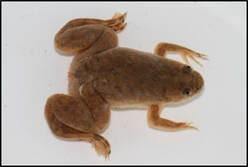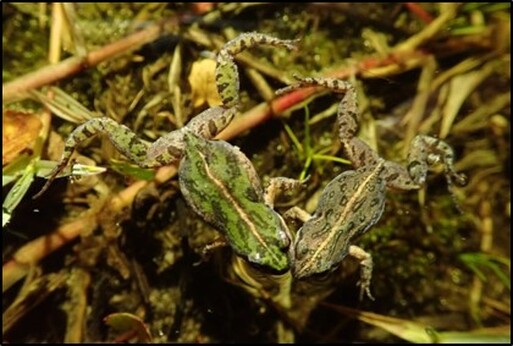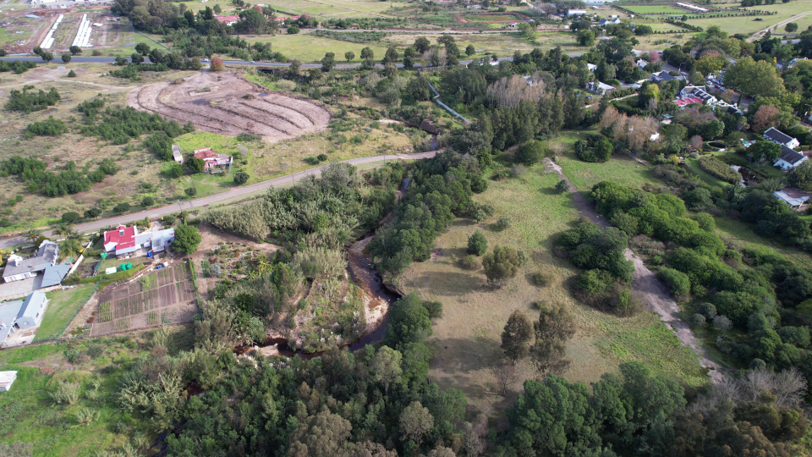|
We recently had a visit from a team of researchers from the Grootbos Foundation. The aim of this field trip was to collect tissue samples of Southern Dainty Frog (Cacosternum australis).The Grootvadersbosch area is the paratype (specimen aiding in defining taxonomy of a species) locality from the study that originally described this species (see Channing et al., 2013). Unfortunately, the team was unable to detect this little frog within the region. However, this could indicate a different breeding phenology relative to individuals found in the southern Agulhas region, where they have already started breeding. This is further reason to investigate the phylogeographic (geographic distribution of unique evolutionary genetic groups) occurrence of this species. However the team did find some interesting creatures... Top: The Striped stream frog (Strongylopus fasciatus) are agile jumpers. Clicking stream frogs make a short, hollow tapping sound that can be quite monotonous. Their calls remind me of lots of people snapping their fingers in succession. We found this species at two sites (Strawberry Hill Farm and near Honeywood dam entrance). They can call from both slightly elevated positions and tucked away in grass patches. Calls are high-pitched, piercing chirps that remind me of a wheel that needs some grease. Middle and Bottom: The Clicking stream frog (Strongylopus grayii) is a common species. Interestingly, we found two colour variants within the area. The common variant (middle) was found at Strawberry Hill Farm dam. Calling from the muddy sides of the water body from sparse grasses, whereas the other variant (bottom) was found in a rocky river stream in Grootvadersbosch Nature Reserve.  The common platanna (Xenopus laevis) predominantly occurs in water. Their powerful back legs have sharp claws that allow them to tear their prey apart like leopards, grabbing small animals with their mouths and tearing it with an overhead back kick. Back legs also aid this animal in burying itself under the soil whilst under water to escape predation or lay in wait for prey. Thanks to Paula Strauss and Michael Fabricius for sharing their findings and we look forward to welcoming them back to the area for more interesting discoveries.
0 Comments
|
AuthorGVB Conservancy Staff Archives
May 2024
Categories |


 RSS Feed
RSS Feed






